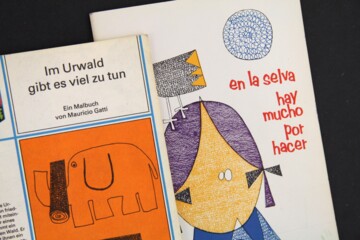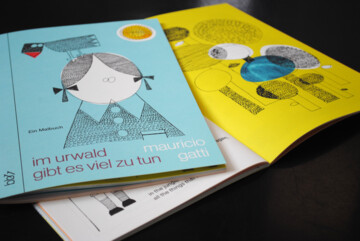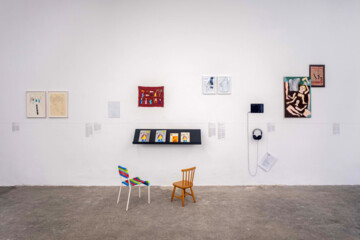→ Solidarity[1] and storytelling. Rumours against enclosure.
In 1971 the young Mauricio Gatti was held prisoner in an old military barracks in Montevideo. He was not alone. The younger of two brothers, he had followed his older sibling into anarcho-syndicalism, and they were detained together with many of their comrades who belonged to the student section of the Federación Anarquista Uruguaya, called Resistencia Obrero Estudiantil.[2] It is said that they were the first political prisoners of Uruguay.[3] The detainees themselves probably knew this was not true, for “all prisoners are political prisoners”, as the poet Diane di Prima wrote at the time in one of her Revolutionary Letters,[4] For Gatti the isolation of imprisonment was felt most deeply in relation to his three-year-old daughter Paula. For her he created a story about a group of animals living in the jungle, as a way to communicate why he was behind bars, separated from her. He did this through correspondence, or more precisely through drawings-as-letters. The idiosyncratic figures are made up of simple geometric compositions that are not quite abstract, but rather playful shapes – seemingly capable of moving around freely and wandering off the page. The storytelling process was created through these letters, which Mauricio’s wife, Paula’s mother Martha, smuggled out of prison. The words were developed orally, throughout the many months that Mauricio spent in prison, during which his daughter would occasionally be allowed to visit. While Mauricio was still detained, this epistolary exchange with his child began to take the form of a book – through the help of comrades living in Comunidad del Sur, an anarchist commune whose members ran a printing house to support themselves. Ruben Prieto, one of the founders, who like many other members of the commune had studied fine art, was a friend and comrade of Mauricio. In 1972, after Gatti’s release and with the editorial care of Comunidad del Sur, the letters to his beloved Paula were turned into a book for all ages, and the publication was distributed in resistance circles in Uruguay.
Titled En la selva hay mucho por hacer [In the Jungle There Is Much to Do], the book tells the tale of a group of animals trying to organise a better way of living together. (Figure 15) It begins by describing what each of the animals does, the ways they contribute to common life in the jungle, and a rundown of their skills and labour, including the sharing of reproductive work and → care (→ care) of the young. Despite the watchful owl who tries to make sure no one disturbs the animals at work, the fire they have made for their meeting is detected by a hunter, who hides and waits for them all to arrive. The hunter, who “knows nothing of the jungle”, waits for and catches each animal that arrives for the gathering. The captured animals are taken to the city and locked up in a zoo, which is “not a place where animals live long or well”. The animals → revolt when the hunter tries to force one of them to eat a small worm, and their collective “NO” takes the form of constructivist-like shapes that travel over the city, across the water, all the way back to the jungle, where they reach the free animals. They in turn send a letter, carried by a little black bird with a red beak, telling how happy it made them to hear the animals refusing to be pushed around; letting them know that the work they had started is being continued by others; and that their little ones are growing as beautiful and tall as jungle flowers. They also put themselves at the disposal of the locked-up animals to help them break out of the zoo. A grand escape plan is developed. Some of the free animals make the trip to come to the imprisoned animals’ aid – including a seal dressed up as a guard. The plan is successful thanks to the valuable everyday knowledge of the city provided by their human friend and ally, a little girl who had been visiting them every Sunday.

Mauricio Gatti, En la selva hay mucho por hacer [In the Jungle There Is Much to Do], 2019, 11th Berlin Biennale for Contemporary Art. Photo: Alex Ostojski.
→ After the Uruguayan military coup on 27 June 1973, Gatti, together with many of his comrades, fled to Argentina. They – mistakenly, it turned out – assumed that it would be a less brutal context for them to clandestinely continue their work. His daughter Paula and newborn son Felipe ended up returning to Montevideo together with their mother. The book for all ages made by Gatti with the help of his comrades remained in Uruguay and circulated by hand. A kind of anarchist fabulation, the book conveys political prison in a manner capable of engaging sensitive young children on their own terms. It did not patronise or undermine the astuteness of small children in coping with the complexities of political violence. Using the interwoven languages of drawing and rhyme, it spoke to the world of a child by applying the anarchist pedagogic principles of → learning from one’s surroundings, from one another, and particularly through action. The book was and is a poignant portrayal of the injustice of prison, motivated by the love of a parent separated from and longing for their child. But it is not, or not only, a story of longing and loss, but a fable about the struggle of living a life broken by violence and enclosure. It connects the turmoil of incarceration to the struggles of children enduring the warfare of life under authoritarian rule. It articulates a language that connects these struggles. In this sense it is, above all, a fable of solidarity. The book published in Montevideo was to be the first of a series called ediciones solidaridad, although these plans were interrupted by the military dictatorship, as was the life of the Comunidad del Sur commune, whose members also had to flee into exile. The logo for the interrupted solidarity series, used in the first edition of the book, was Gatti’s drawing of a little black bird carrying the message written by the free animals of the jungle.
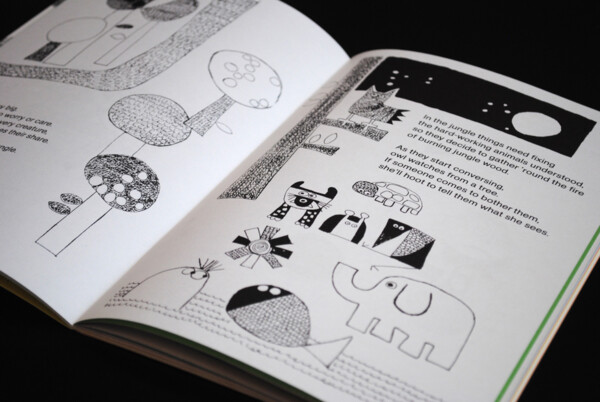 Mauricio Gatti, En la selva hay mucho por hacer [In the Jungle There Is Much to Do], 2019, 11th Berlin Biennale for Contemporary Art. Photo: Alex Ostojski.
Mauricio Gatti, En la selva hay mucho por hacer [In the Jungle There Is Much to Do], 2019, 11th Berlin Biennale for Contemporary Art. Photo: Alex Ostojski.
Word-weapons/word-dance
Rumours and the stories that they circulate are often referred to as something one has been told by “a little bird”, words shared without having to follow the conventional routes and constraints of communication, messages able to fly above and beyond buildings, fences, and walls. For the Chilean poet and artist Cecilia Vicuña, words themselves are capable of becoming small, winged beings, fluttering in to tell us their stories. Vicuña relates how the military coup in Chile – which took place on 11 September 1973, just two and a half months after the one in Uruguay – intensified her vision of these hovering words, which she turned into a kind of word-splitting doodle-poems she called palabrarmas. Their name can be read as palabrar-más, which in Spanish means “to word-more”, and also as palabra-armas, or “word-weapons”, Mauricio Gatti’s solidarity bird actually entails both of these aspects. The words gifted by the free animals become weapons of sorts for the animals in captivity. They connect their struggles and give shape to a common language, making it possible for them to escape.
One of the first palabrarmas produced by Cecilia, who was in London at the time of the coup, was based on the word “solidarity”, in Spanish solidaridad, which she rearticulated as sol y dar y dad. Her way of rearming the word had nothing to do with its accepted etymology, coming from the Latin solidum, meaning “a whole sum”, “to make whole”, or “to make solid”. Cecilia the poet was a fierce young woman, but the military coup did not make her come together with others to become solid and strong. Instead, as she describes it, “Suddenly I became a living volcano”.[5] Imagining Cecilia frenetically at work on her small word weapons – like Gatti and his little animals – becoming a flood of lava, alone and far away from her loved ones, overflowing with simultaneous rage and →vulnerability, somehow provides an important preamble to the making of her palabrarma for solidarity. Sol y dar y dad (in English “to give the sun”, or more precisely “to give and give sun”), in the multiple graphical and textile versions made by the poet-artist, shows different variations of open hands gifting the sun, reaching out to something that cannot be held, but that holds one together with others. This is precisely what the letters of Gatti’s story do – both the word-weapon-device dropped by his small black bird with a red beak in the animals’ cages, and his own letters for his little girl. Their agency transcends and is at the same time powered by the affective relations that they sustain and support. As with Cecila’s solidarity palabrarma, Gatti’s letters are not so much visions or images of hope, but articulations of an insurgent etymology: a slicing, opening up, and multiplying of words, to release the multitude of stories and relations normally kept inside.
Unleashing these multiple stories opens up a question that is a very urgent one in relation to solidarity, a question that is pertinent not only to Gatti’s book but to his life story: How to be in solidarity when there is no possibility of being solid or whole, but when things are broken and vulnerable? As a palabrarma, sol y dar y dad sets these stories into motion. It is not a programme or definition, but a word-dance of political restlessness. The poetry of Mauricio Gatti possesses the same kind of restless beauty, posing questions that are all the more urgent today: What can solidarity mean? What does it mean for people living it, practising it, and in need of it? Can it be danced when needed most by bodies in loneliness, when the only other movement that is felt is the weight of fascism and state terrorism pressing against them?
Each character in En la selva hay mucho por hacer looks like they could break into dance at any moment. So it is not at all surprising that almost immediately after being published, the book was turned into an animated film. This animation was created by a group of young architecture students working with the Cineteca del Tercer Mundo (C3M), an important hub of radical filmmakers, film distributors, and producers based in Montevideo, which existed from 1969 until it was shut down and their equipment confiscated in 1974 by the dictatorship. Three members of the C3M, Walter Tournier, Gabriel Peluffo, and Alfredo Echániz, came together to form the Grupo Experimental de Cine to make a short animated film based on Gatti’s book. The adaptation was very close to the original publication, working closely with Gatti’s drawings and turning the verses into a song. They finished the animation in a makeshift way, handcrafting it under precarious conditions and while working in secret. They managed to screen the animation twice in Montevideo before the filmmakers and most of the C3M group were arrested and/or went into exile. It was their first and last film as a group, and the last production to come out of the C3M. The animation was smuggled out of the country, winning several awards in subsequent years.[6] It was shown in the late 1970s and early 1980s in the context of human rights campaigns in solidarity with Latin American resistance to authoritarian regimes, and in support of the growing numbers of exiles and refugees from the region who were spread out all over the world. Most copies of the film were eventually lost, as they continued to travel following the routes of those who had been displaced.
The book itself had a similar trajectory. A new edition was made in Spain in 1977, where it was republished by Ediciones Solidaridad of the Centro de Información y Documentación del Tercer Mundo (Information and Documentation Center for the Third World) in Barcelona, where Gatti was living in exile. It was almost identical to the Uruguayan copy, except for one change of colour in the introductory pages. The very deliberate black and red pages introducing the book were altered to a more amiable green and red (a change the Comunidad del Sur anarchists would not have approved). There are also two German language editions, which were published as colouring books, one produced in Switzerland (1979) and another in East Germany (1987). The first is a → translation that tries to be very respectful of the original text and message, while the latter by the lyric poet Heinz Kahlau is more an adaptation than a translation, and captures the original’s spirit of transgenerational language, rhythm, and rhyme. The way the drawings were reproduced in these German language versions indicates that the originals were retraced by hand. Many years later, in 2002, a French edition was published and is still distributed by Amnesty International. It followed a new edition by the Comunidad del Sur group, which had renamed their editorial house Nordan during their exile in Sweden and which republished the book in the year 2000 after some members had returned to Uruguay and re-established the commune. In every case, the book was self-published by very small editorial houses or by political organisations that recognised the importance of spreading En la selva hay mucho por hacer as a necessary story, as a contemporary weapon of solidarity that should be put to use. Despite the artistic quality of Gatti’s work, the film and storybook are known almost exclusively within the small niche of human rights and political refugee solidarity networks, particularly those with links to Latin America and the wave of refugees fleeing authoritarian regimes and their criminal abuses during the 1970s and 1980s. Those who republished it, almost always without permission, did so in the spirit of understanding it as a story that cannot be owned but must belong to everyone.
Mauricio Gatti’s book has the luminosity of Cecilia Vicuña’s sol y dar y dad, but it is equally a story of a broken life. Within four years of being released from prison in Uruguay, Mauricio Gatti’s brother, Gerardo Gatti, his pregnant niece Adriana, and her partner Ricardo, were murdered in Argentina in 1976, added to the number of Uruguay’s disappeared – all victims of the infamous Plan Cóndor (Operation Condor). Mauricio Gatti’s comrade and new partner Sara also became a political prisoner and spent five years in different detention centres. Just weeks before being kidnapped, she gave birth to a baby boy, Simon, who was taken from her and disappeared. Sara was released in 1981 and relentlessly searched for her and Gatti’s child from then on, finding their son almost a decade after Mauricio passed away in 1991. Mauricio himself barely escaped the secret military police raids that killed every single other person who had a leadership role within his political organisation. The sole survivor of the core group, he went into exile to Barcelona, where he remained well into the 1980s. In a way it could be said that writing En la selva hay mucho por hacer was the closest he would be allowed to get with his little girl, for whom the book was written.
The story of the artist Mauricio Gatti and this book is not one of reparation, of getting over trauma, but one of brokenness. The void created in people’s lives through incarceration, disappearance, and torture is not something that allows for reconciliation – there is no way to move beyond the catastrophe of retroactive and perpetual isolation. En la selva hay mucho por hacer is a story of living within trauma, of organising despite it, of solidarity occurring against the odds of crushing enclosures. It is not a tale of healing, but a fable of insurgent action and a “solidarity of attack” [7] set into motion – of life and struggle in all its complicated violence and beauty, striking back at us.
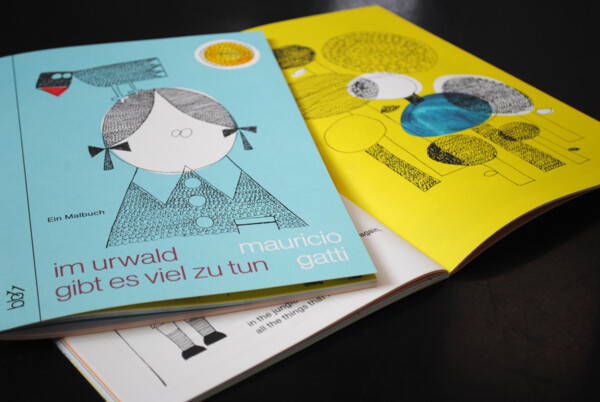 Mauricio Gatti, En la selva hay mucho por hacer [In the Jungle There Is Much to Do], 2019, 11th Berlin Biennale for Contemporary Art. Photo: Alex Ostojski.
Mauricio Gatti, En la selva hay mucho por hacer [In the Jungle There Is Much to Do], 2019, 11th Berlin Biennale for Contemporary Art. Photo: Alex Ostojski.
Now, over forty years after the book was first compiled, it is a radically different time for refugees. No one then could have imagined that more prison and detention camps would exist today than at the time it was written, many of them located here in Europe, precisely in those countries that at the time welcomed those political refugees fleeing death and disappearance. How can we explain that an increasing number of children not only experience separation from their parents who are incarcerated for political reasons, but they themselves suffer the perils of torture and imprisonment. Given today’s carceral capitalist regimes, the need for developing a language to address these experiences seems crucial. The question of how to be in solidarity when things are broken and fragile is not a philosophical one, but a practical one. The storytelling that unfolds in En la selva hay mucho por hacer offers a language for speaking to one another, to be used not only for surviving but also for attacking the (systematic) warfare of enclosure through the help of an owl, turtle, snail, fish, tiger, elephant, seal, bird, and street-savvy little girl.
For being extremely patient and generous in answering my relentless questions, I would like to thank Laura Prieto from Comunidad del Sur, Walter Tournier and Gabriel Peluffo, members of the Grupo Experimental de Cine, and the sociologist Gabriel Gatti. I am particularly grateful to Paula Gatti, Felipe Gatti, Martha Rodríguez-Villamil for supporting and making this publication possible.

